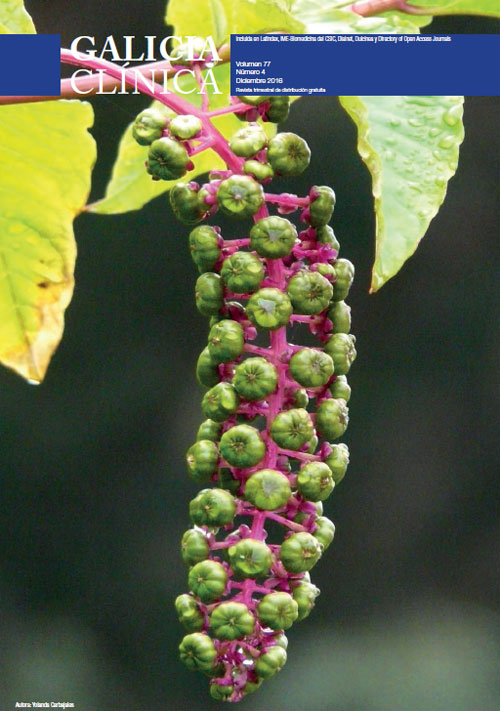Resumen
Negative pressure pulmonary oedema is a rare but potentially harmful event[1,3]. The mechanisms of this pulmonary injury are not totally understood. It is believed that airway obstruction, as caused by laryngospasm after extubation, combined with the attempt of a forced inspiring effort, produce a negative intrathoracic pressure, increasing the venous return with a consequent rise of the hydrostatic pressure, ultimately leading to a leakage of fluid to the extracellular compartment. Nevertheless, it is possible that other factors may contribute to this condition, including hypoxia, cardiogenic and neurogenic mechanisms[2]. We present the case of a healthy 20-years-old male, who underwent a deferred left clavicle osteosynthesis. Immediately after surgery, the patient developed irritative cough and marked dyspnoea. There were no auscultatory anomalies and the plain chest radiograph was normal. He did not show clinical improvement after increasing oxygen supply and bronchodilators, and was then transferred to our hospital for further evaluation. A thoracic Computed Tomography (CT) scan was performed (figure 1), revealing multiple areas of ground glass aspect and alveolar filling with centrilobular distribution, suggesting alveolar haemorrhage. The patient remained under observation for 48 hours, with clear signs of clinical improvement and no further complications, with no need for positive pressure ventilation. He was discharged being asymptomatic and with no signs of respiratory distress, after a control CT scan showing radiologic improvement. This case highlights the need to be aware of this diagnosis, that is usually self-limited but can be life-threatening and require specific treatment.Galicia Clínica by Sociedad Gallega de Medicina Interna is licensed under a Creative Commons Reconocimiento-NoComercial-SinObraDerivada 4.0 Internacional License.
Created from galiciaclinica.info.


